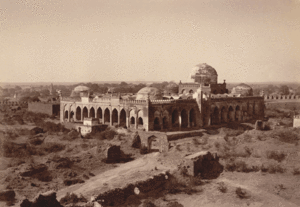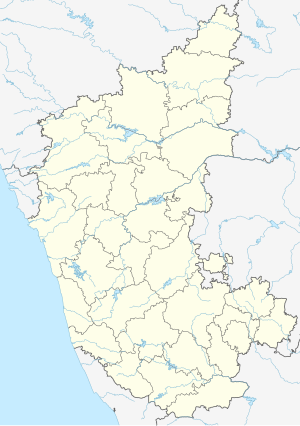| Gulbarga Fort | |
|---|---|
| Kalaburagi, India | |
 Gulbarga Fort | |
 Great Mosque (Jami Masjid) in Gulbarga Fort | |
| Coordinates | 17°20′26″N 76°49′52″E / 17.3405°N 76.8311°E [1] |
| Type | Fortress |
| Site information | |
| Controlled by | Government of Karnataka |
| Open to the public | Yes |
| Condition | Ruins |
| Site history | |
| Built | Fourteenth century |
| Built by | Sultan Al-ud-din Bahmani of Bahmani Sultanate in 1327 and Adil Shah |
| Materials | Granites and lime mortar |
The Gulbarga Fort is located in Kalaburagi in the Kalaburagi district of North Karnataka. This fort was originally constructed by a hindu king Raja Gulchand, but it was subsequently significantly enlarged in 1347 by Al-ud-din Hasan Bahmani of the Bahmani Dynasty after he cut off his ties with the Delhi Sultanate; Islamic monuments such as mosques, palaces, tombs, and other structures were also built later within the refurbished fort. The Jama Masjid, built later within the fort in 1367, is a unique structure built in Persian architectural style, fully enclosed, with elegant domes and arched columns, unlike any other mosque in India. It was built to commemorate the establishment of the dynastic rule of the Bahmani kingdom at Gulbarga fort between 1347 and 1424, though the capital was initially Daulatabad. It remained the capital of the Bahmani Kingdom till 1424 where after the capital was shifted to Bidar Fort, as Bidar had better climatic conditions.[1][2][3]
- ^ "Gulbarga". Archived from the original on 4 June 2011. Retrieved 2 October 2009.
- ^ "Gulbarga Fort". Retrieved 2 October 2009.
- ^ "Gulbarga". Karnataka Online. Retrieved 4 November 2009.

